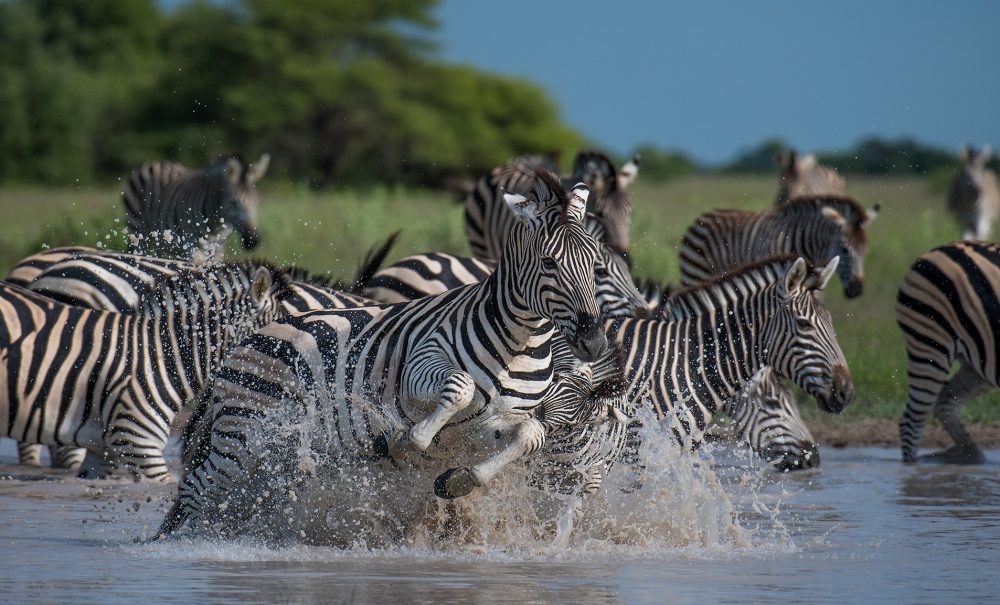Travel Tips
Tanzania, without a doubt, is the ideal representation of an African safari destination you’ll never imagine. Whether you’re planning a day trip or an immersive wild safari, Tanzania has a unique way to unveil its awe-inspiring beauty and splendors as you head on to the next corner. After all, Tanzania boasts some of the world’s most famous and prestigious safari destinations than any other country on the planet: from the great Serengeti plains teeming with millions of game, Mt. Kilimanjaro – the highest freestanding mountain in Africa, rain forests with an abundance of monkeys and bird life, the Ngorongoro Crater – one of the natural wonders of the world, all the way to Zanzibar beaches dotted with palm trees and covered with sand as white as snow, coral reefs that host countless tropical fish, and beautiful diving spots, Tanzania has all that it takes to touch the very core of your being.
For those who are pressing for time and yet craving for the best of African Safari experience; be it the Big Five or other wildlife game viewing, interaction with the locals for exciting cultural tour experiences, or Nature walk, our specialized Tanzania Day Trips are designed to make you fall infinitely in love with Tanzania in just a day and provide you with an incredible, once-in-a-lifetime experience. With little time in hand, your day trip with Impala DMC is designed to entertain, educate and inspire an adventurous spirit in you.
You’re about to embark on an adventure of a lifetime! Tanzania day trips with Impala DMC offer a plethora of alternatives, each with its unique variety of experiences. Whether it’s your first or thirtieth safari in Tanzania, the experience you can anticipate is always unique. Our favorite destinations for our specialized day trips are those that we have personally visited and explored time and time again. We not only enjoy visiting these places – we feel so much at home there. Come explore with us and discover the adventure that awaits you.
So why should you go on a Tanzania Day Trip?
Tanzania is such a big world within the confines of a single country. More than a quarter of its land area is dedicated to national parks and game reserves, making it the world’s most diverse wildlife destination. From incredible game reserves teeming with legions of wildlife to glorious beaches, luxurious accommodation and incredible cultures and food, there truly is something to suit every kind of safari enthusiast coming to Tanzania. With our specialized day trips, which certainly cannot fail to impress, you are sure to have a life changing experience.
Tanzania can be visited at any time of the year but some months are just better than others. There are two rainy seasons; however, due to the impact of global warming, these rains are no longer consistent and overwhelming compared to when they once were. The short rainy season lasts from October to December, and the long rainy season lasts from late February through early May. The two rainy seasons represent the low season, while the dry seasons of the year represent the high or peak season for tourist activities.
Travelling to Tanzania during the rainy season has both advantages and disadvantages. However, while this is solely dependent on what destination you choose to visit, the major disadvantage of the low season is that the majority of the roads in remote places are impassable and the wildlife can be hard to locate. Some places can sometimes get chilly-cold during early morning and nighttime, but the daytime is relatively dry and sunny. Conversely, travelling to Tanzania during the rainy (low) season can provide you with the opportunity to take advantage of inexpensive flights, which in most cases you will typically have to work for them since you will need to fly-in through a connecting flight. This is also the best time for honeymooners and anti-social individuals who prefer being among fewer crowds.
The High or Peak Season, on the other hand, which is the ideal time of the year for tourist activities in Tanzania, is from January through the end of September. This is the best time when both wildlife safaris and beach vacation can be done with less to zero frustration and is considered the most preferable time for wildlife viewing. You can plan for your Zanzibar Beach Holiday or Tanzania Day Trip during this time. However, July to March is the most crowded time of year in the national parks. Simply put, the country’s seasons and wildlife viewing are determined by rain events, so the time of year you choose to visit will have a slight impact on your experience.
Tanzania’s green season, which lasts from November to March, features much quieter weather. The country transforms into a bird watcher’s nirvana given the abundance of migratory bird species during this time, regardless of the likelihood of rain showers. It’s one of the perfect time for bird lovers.
TAKE A LOOK AT OUR MONTH BY MONTH CLIMATE GUIDE TO FIND THE IDEAL TIMING FOR YOU.
January:
As the humidity has already begun to increase, the temperature is rising and there is a chance of rain. While the lower prices make this a great time to go on wildlife (including bird watching opportunities) and cultural safaris in Tanzania, many hotels tend to charge more for accommodation from mid-November to early January.
February:
Particularly between late February and early May, the rainy season is likely to start. With a chance of rain, the weather is typically hot in most places.
March:
Characterized by prolonged, heavy rains, which can make it difficult to spot wildlife and make most roads inaccessible, especially in national parks. Mosquitoes are most active and deadly from March through April. However, this is the time of year when prices are at their lowest.
April through May:
While Tanzania can still be visited at this time of year, the majority of tourist activities, including day trips, are practically impossible as the rainy season is at its height during these months and the roads are extremely slippery, lodges and hotels around national parks and Zanzibar will likely be fully closed. Before making a reservation, we advise you to get in touch with us to inquire about any options during this time.
June:
This month marks the beginning of the High season in Tanzania. It’s a wonderful time for safaris and a variety of outdoor and other tourist activities as the rainy, wet season draws to a close in the early June, taking a hold of the long dry season right up until October. The temperatures range from 15°C to 27°C in the mainland of Tanzania and up to 30°C in Zanzibar, making your vacation a blast.
July:
July through October marks the best time for day trips in most of the national parks, when thousands of parched animals flock to the watering holes and thousands more make their long way to the permanent water ways, favoring amazing opportunities for wildlife spotting. Zanzibar, on the other hand, is renowned for its clear blue skies, azure waters warmed by the constant sunshine, and sandy white beaches in July as the daily temperature is set to a perfect 28°C.
August:
August is a great month to visit Tanzania’s mainland for a wildlife and cultural safari, mountain hiking, or just to enjoy the pristine beaches of Zanzibar Island, if you’re trying to decide when could be the best time of year to do so. A spice trip is best taken in the dry season, when the cloves are gathered and stretched out to dry. Tanzania’s Peak Season for tourism is in full swing in August, which means that while there may be a few stray clouds here and there, the skies are generally clear, the sun is shining, and the temperature is comfortable for outdoor activities throughout the country.
September:
While September marks the end of the dry season, it is also one of the greatest months to visit Tanzania due to the mild, pleasant, and brilliant weather. With the scarcity of pasture and water in the national parks at this time of year, wildlife viewing becomes inevitable show of the season as the wildlife congregate around water sources in large numbers. Zanzibar, on the other hand, has some of the best options for a plethora of amazing tourist activities such as nature and culture day tours, scuba diving, fishing, snorkeling, cooking workshops with locals, or simply setting up on the beach and working your tan while chilling out in the azure waters.
October:
Over the first few weeks of October, you will experience the culmination of the protracted dry season, which has been in effect since late May or early June. This offers a last-minute opportunity to experience Tanzania’s outstanding natural attractions, culture and beach vacation. Enjoy your time relaxing on the beach, taking in the sunshine, or cooling off in the Indian Ocean’s warm waves. Can moreover, feel the sand between your toes, lay back, and enjoy the spectacular sights of tropical aquatic life. The rainy season typically doesn’t start until late October or early November.
November:
When the season changes at the end of October and rain returns to deluge the dry earth, November marks the end of Tanzania’s protracted dry season. Many animals are increasingly going outward, spreading themselves more afield rather than focusing on scarce watering sources. During this period, Zanzibar’s fauna and flora come to life, giving the island a pleasant, greener appearance. In November, the wind around the island is much more calm, providing a wonderful experience and calm waters for diving among island’s numerous reefs.
December:
December, along with November, is regarded as the short rain season. The countryside explodes into lush, verdant splendor, providing excellent photographic opportunities. With the humidity that the rain brings, the temperatures, which range from 16 to 28 degrees Celsius, are reasonable but can rise quite a little. The Zanzibar Island is the place to go if your dream holiday in December entails a day trip, pristine beach exploration, or just a quiet getaway. After a typically wet November, the island’s scenery comes back to life in December, giving the island an especially tropical vibe.








